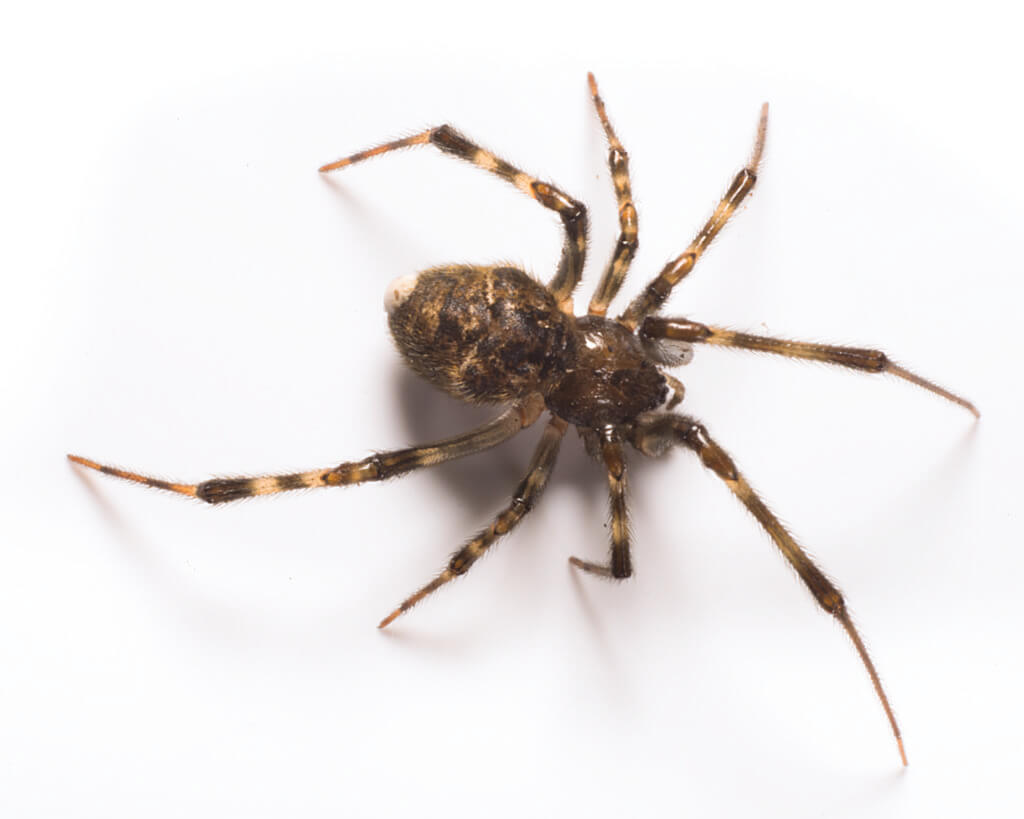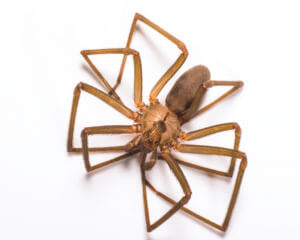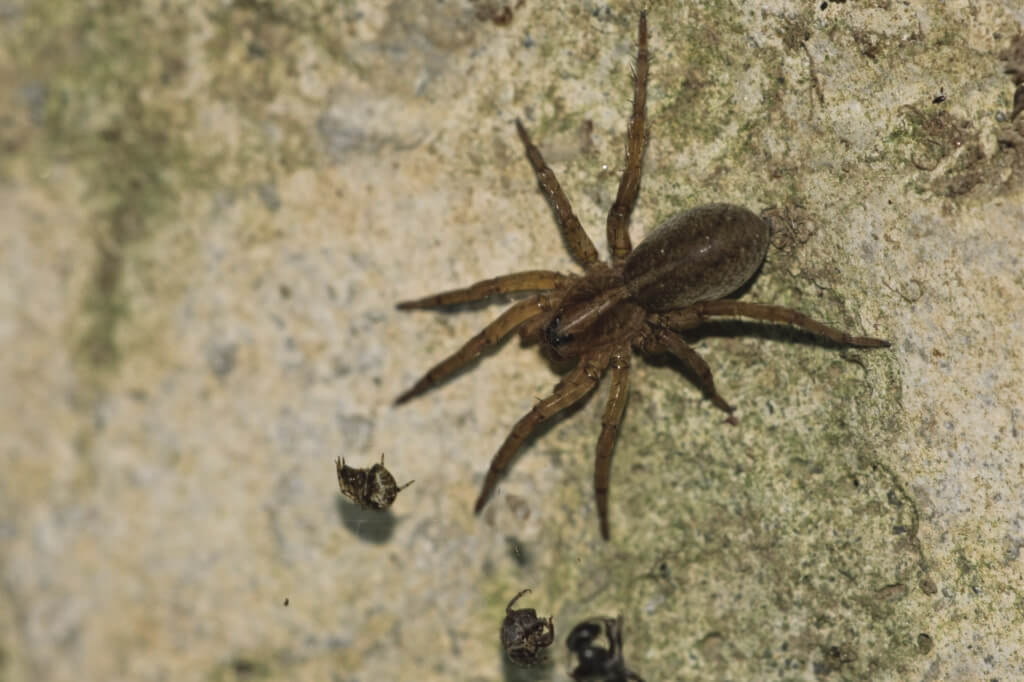Jumping Spiders
As one of many spiders in Missouri and Kansas. The jumping spiders do not construct snare webs but instead build loosely woven web treatments in a saclike form, composed of several envelopes with usually two openings. Unlike most spiders, jumping spiders are active during the daytime and seem to

enjoy catching a few sun rays. They are feisty hunters and have the keenest vision of all spiders, being able to detect and react to movement up to 18 inches in distance; however, their night vision is very poor. This species can rapidly move both sideways and backward for short distances. As their name implies, they are excellent jumpers. Our experienced spider exterminators
can help you with all spiders.
Retreats may be built under furniture, in drapery folds, between books on bookshelves, in cracks found in wood floors, around doors and window moldings, etc. Outside retreats may be found
under loose bark, between leaves, etc. Indoors, spiders will usually be found hunting around
windows and doors because more insects are attracted to these areas and their vision is best in sunlit areas. Outdoors, and jumping spiders are commonly seen running over tree bark, under stones
and boards, on bushes, fences, decks, and the outside of buildings, especially in sunny areas. This is why Gunter Pest Control has the best spider exterminators in Kansas City because we care about getting rid of spiders.
While they can bite, the jumping spider bite is not poisonous. They are not considered dangerous.
Brown Recluse Spiders

Brown recluse spiders are nocturnal and eat other small bugs like cockroaches and crickets. These spiders spin irregular webs, which are not used for catching prey but rather as a retreat.
Brown recluse spiders often live outdoors where they are typically found around rocks, utility boxes, and woodpiles. Indoors, brown recluses can be found in an undisturbed area, such as inside boxes, among papers, in seldom-used apparel and shoes, under furniture, or in crevices of window moldings. Closets, attics, crawl spaces, and basements are the most common brown recluse spider hiding spots.
Like the black widow spider, the brown recluse spider bites in defense and does not bite humans instinctively. However, both female and male brown recluse spiders can bite and inject venom. The brown recluse’s bite is usually not felt but results in a stinging sensation followed by intense pain as long as six to eight hours later. A small blister usually develops at the bite location that can turn into an open ulcer. Restlessness, fever, and difficulty sleeping are common symptoms of a brown recluse spider bite.
Wolf Spiders
Wolf spiders live in Missouri and in Kansas as well and actively hunt during the night and usually rest in sheltered places during the day.

They are fast on their feet and pursue prey. Because of these habits, wolf spiders are commonly seen by people.
Wolf spiders may enter structures in search of prey. Although they are not inclined to be permanent residents in structures, they often consider themselves a roommate once inside your home. Indoors, wolf spiders tend to remain at or near floor level, especially along walls and under furniture. Outside, wolf spiders can be found under stones, landscape timbers, firewood, leaves, and other debris.
Because wolf spiders feed on a variety of insects, including crop pests, they can be beneficial. Wolf spiders can bite, but it’s extremely rare to experience a wolf spider bite unprovoked. They will only bite if they are handled. The presence of wolf spiders in homes is usually accidental.
Cellar Spiders
Cellar spiders seem to fare better in areas with higher relative humidity. These spiders build loose, irregular, tangled webs in corners, and hang upside down on the underside of them. The webs are not cleaned but rather new webs are continually added. This habit can result in extensive webbing in a relatively short time. When disturbed on its web, the cellar spider has the habit of rapidly shaking its body in a rotary movement to confuse and entangle the prey.
Long-bodied cellar spiders and their webs are usually found in dark and damp places, such as cellars, basements, and crawl spaces. They can also be found in the corners of garages, sheds, barns, and warehouses, on eaves, windows, and ceilings, and in closets, sink cabinets, and bath traps.
Cellar spiders do not pose a threat to humans, as their weak mouthparts keep them from injecting venom into humans.











